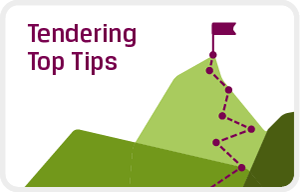Subject Matter Experts
There is no substitute for having people who know what they are talking about contribute to tenders.
While it can be tempting to allow busy technical people to get on with their ‘day job’ or ‘fee earning work’, it is a false economy to omit them from bid writing tasks.
Winning work is vital to any company’s future workload so the best people must always be involved.
Repetition
Some tender documents appear to ask the same thing repeatedly, meaning you may think you need to write the same thing in multiple places.
While this is occasionally true, it is more likely that you have misinterpreted the buyer’s requirements.
Check the context within which the question is being asked and ensure you think laterally about different ways to respond.
Mirror Mirror
When deciding how to structure a proposal, try to make it as easy as possible for the evaluators to find the things they need.
You should resist the temptation to put the sections you find most interesting ahead of the less exciting ones.
If you stick to the order in which they ask for items and mirror their structure, you will increase the likelihood of them reading your responses in a positive frame of mind.
Objective Setting
When writing any business document, it is important to keep the objective in mind.
The objective is determined by considering who the readers will be, what level of knowledge they are likely to have and what impression you want to create.
With bids and proposals, your objective is to ensure all evaluators understand and believe your win theme.
Producing Graphics
An effective way to summarise a process or show an organisational structure in a tender is to use a graphical image.
Many people assume expensive software is needed, however you can easily produce high-impact graphics within your normal MS Office package.
Design your organisational chart or process flow diagram in Powerpoint and then use “paste special” to transfer it into Word.
Bid Tender Library
Time spent developing and maintaining your bid library will be repaid many times over.
If you have good file-copies of responses to typical questions, they will make it considerably quicker to produce a final answer.
Remember that you must still tailor the text to the individual contract and ensure that it answers all parts of the question.
Scoring
When a client issues scoring guidance, you should use it to frame your response because it indicates the areas in which they are most interested.
Take note of the weightings and marking proportions you have been given, and use this to decide about the level of detail you need to provide.
Some questions may contain numerous paragraphs and sub headings but if they only merit 0.5% of the total marks, you should give less detail than questions which attract 10% or more of the marks.
When Less is More
Many ITT documents contain word or page count limits and these often seem prohibitively low.
The temptation can be to squeeze as much text into the available space as possible or to bend the rules by over-using graphics.
Where limits have been given they should be accepted in the spirit they are intended and your time should be spent making the content high impact, not hard-to-read.
Bid Withdrawal
It is a difficult decision to withdraw from a bid, particularly once staff have started to compile responses or work on technical solutions.
Many firms continue investing time and energy in a document despite knowing that the solution is not viable and/or the bid is not going to win.
Good bid managers recognise that new issues sometimes come to light after an initial bid/no bid decision has been taken and are willing to reconsider their original strategy.
Evaluation
ITT (invitation to tender) documents usually give guidance about the evaluation criteria which will be applied.
You should ensure that you take account of all the requirements in order to score maximum marks.
If you only answer the basic question, you can only expect to be awarded average marks.
Case Studies
To show relevant experience, you should produce case studies of completed projects.
The case studies should concentrate on the added value you delivered and the challenges you overcame.
If you only describe the technical scope of each project, the client will not know if you performed well or otherwise.
Time Extension
If a client awards a submission time extension, make sure you use the time wisely.
Many bidders will take their ‘foot off the gas’ and enjoy a period of respite from the pressure.
Wise bidders stick to their original timetable but use the additional time to carry out a more thorough review of the final document and make improvements.































































